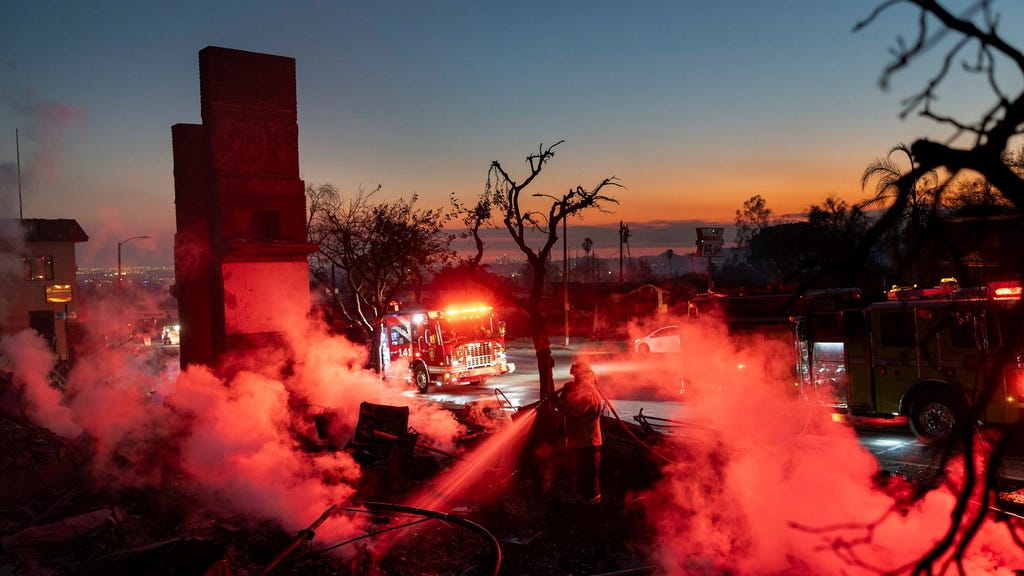The devastating wildfires that ravaged residential areas of Los Angeles, the second-largest city in the United States, beginning on Tuesday, have painted a grim picture of destruction and loss. Fueled by strong winds, the inferno spread rapidly, challenging the relentless efforts of firefighters. While conditions improved slightly on Friday, allowing for some progress in containment, the fires continued their relentless advance, forcing further evacuations Friday evening. The Palisades fire, in particular, exhibited a resurgence in its eastern flank, continuing its northeastern trajectory, adding to the already widespread devastation.
The human cost of this disaster continues to mount. Over 150,000 residents have been forced to evacuate their homes, with no clear indication of when they can return. Authorities have confirmed eleven fatalities, but tragically, they anticipate discovering more victims as they gain access to previously inaccessible areas. The sheer scale of the destruction has hampered search and rescue efforts, leaving many areas unsafe for thorough investigation. The widespread damage, coupled with the ongoing threat of flare-ups and hazardous conditions, presents a daunting challenge for emergency responders.
Heartbreaking stories of loss emerge as families identify their loved ones among the victims. Anthony Mitchell, 67, perished alongside his son in his 20s, who had cerebral palsy, while awaiting an ambulance. His daughter recounted his final phone call, describing his attempt to evacuate before the flames engulfed their garden. His unwavering devotion to his son prevented him from leaving his side, a testament to the powerful bonds of family tested in the face of unimaginable tragedy.
Another victim, Viktor Shaw, 66, tragically lost his life while attempting to defend his family home. Ignoring evacuation orders, he was found deceased near the house with a garden hose in hand, a poignant symbol of his futile attempt to protect the home his parents had owned for nearly 55 years. Similarly, 82-year-old Rodney Nickerson, who had purchased his home in 1968, also perished in the fire. Despite packing his car, he ultimately decided to stay, a decision that tragically cost him his life. These individual stories offer a glimpse into the profound personal tragedies unfolding within the larger disaster.
The ongoing search and rescue efforts face formidable obstacles. Search teams and cadaver dogs navigate treacherous terrain, contending with downed power lines, leaking gas mains, and unpredictable flare-ups. The monumental task involves searching approximately 10,000 buildings, a grim reminder of the fire’s widespread impact. The magnitude of the disaster has left even seasoned emergency responders grappling with the profound tragedy unfolding before them.
This week’s fires are already considered one of the worst fire disasters in California’s history. The scale of the destruction and loss of life evoke memories of the devastating Camp Fire of 2018, which claimed 85 lives. As the fires continue to burn and the full extent of the damage becomes clearer, the focus shifts to recovery and rebuilding. The resilience of the community will be tested in the long and arduous process of healing and reconstruction. The tragic stories of loss will serve as a stark reminder of the devastating power of wildfires and the urgent need for continued efforts in prevention and preparedness.














